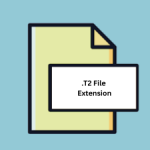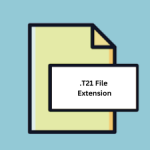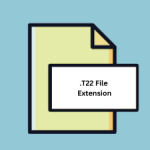.GRK File Extension

Gradekeeper Class Gradebook File
| Developer | Gradekeeper |
| Popularity | |
| Category | Data Files |
| Format | .GRK |
| Cross Platform | Update Soon |
What is an GRK file?
In the realm of digital information, file extensions play a crucial role in organizing and identifying specific types of data. One such file extension, less commonly known but vital in educational settings, is the .GRK file extension.
These files are associated with Gradekeeper, a popular class gradebook software used by educators to manage and track student performance.
We will delve into the world of GRK files, exploring their origin, history, structure, technical specifications, advantages, disadvantages, and methods for conversion and opening on various operating systems.
More Information.
Gradekeeper was initially developed as a tool to simplify the arduous task of tracking student grades manually.
Before the advent of digital gradebook software, teachers had to maintain handwritten records, which were not only time-consuming but also prone to errors.
Gradekeeper aimed to streamline this process by providing a digital platform where teachers could enter, calculate, and manage students’ grades effortlessly.
The .GRK file extension emerged as the proprietary format for saving and exchanging these gradebook records.
It allowed educators to easily share their grade books with colleagues, administrators, or students’ parents, fostering transparency and communication within educational institutions.
Origin Of This File.
The GRK file extension is specifically tied to the Gradekeeper software, which was created by Daniel Ethier.
The software has been in use since the early 2000s and has gained a dedicated following among teachers and educators for its ease of use and efficiency in managing class gradebooks.
As the software gained popularity, so did the GRK file extension, which became the default format for saving and sharing gradebook data.
File Structure Technical Specification.
GRK files are binary files, which means they contain data in a format that is not easily readable by humans.
The structure of a GRK file is designed to store various elements of a class gradebook, including student names, assignments, scores, and other relevant information.
The technical specifications of GRK files may vary slightly depending on the version of Gradekeeper being used.
In general, these files contain data organized in a structured manner, with headers and fields corresponding to different aspects of a class gradebook.
The format is optimized for quick data retrieval and manipulation within the Gradekeeper software.
How to Convert the File?
Converting GRK files (Gradekeeper Class Gradebook files) to other formats can be a bit challenging because GRK files are proprietary and not directly compatible with many other software applications.
There are some workarounds you can use to convert the data within GRK files into more commonly used formats such as Excel (XLS or XLSX) or CSV. Here are some steps you can follow:
Method 1: Export as PDF and Extract Data
- Open the GRK file in Gradekeeper: Ensure that you have Gradekeeper software installed on your computer.
- Open the specific GRK file you want to convert by launching Gradekeeper and navigating to “File” > “Open.”
- Once you have the file open, you can export it as a PDF. To do this, go to “File” > “Export” and select “PDF” as the export format.
- Save the PDF file to your desired location on your computer.
- Use a PDF-to-text conversion tool: You can use a PDF-to-text converter or extraction tool to convert the PDF file into plain text or a CSV format. There are various online tools and software applications available for this purpose.
- Open the converted text or CSV file in a spreadsheet program: After extracting the data from the PDF, open the resulting text or CSV file in software like Microsoft Excel or Google Sheets. You can then manipulate, edit, or further export the data as needed.
Method 2: Manual Data Entry
If you are unable to use the PDF export method or prefer a different format, you can manually enter the data from the GRK file into a spreadsheet program. Here’s how:
- Open the GRK file in Gradekeeper: Launch Gradekeeper and open the specific GRK file you want to convert.
- Create a new spreadsheet: Open your preferred spreadsheet application, such as Microsoft Excel or Google Sheets.
- Manually enter the data: For each piece of information in the GRK file (e.g., student names, assignments, scores), manually type the data into the corresponding cells in your spreadsheet. This method is time-consuming, but it ensures accuracy.
- Save the spreadsheet in your desired format: Once you have entered all the data, you can save the spreadsheet in a format like XLS, XLSX, or CSV, depending on your needs.
Advantages And Disadvantages.
Advantages:
- Efficiency: GRK files are highly efficient for storing and managing class gradebook data within the Gradekeeper software. This makes it easier for educators to keep track of students’ progress.
- Data Integrity: Using a proprietary file format ensures that the integrity of gradebook data is maintained, reducing the risk of corruption or compatibility issues.
- Security: GRK files can be password protected, adding an extra layer of security to sensitive student information.
Disadvantages:
- Limited Compatibility: The primary drawback of the .GRK file extension is its limited compatibility with other software. It can only be opened and edited using Gradekeeper, which can be a barrier when sharing data with those who do not have access to the software.
- Vendor Lock-In: Users may feel locked into using Gradekeeper due to the proprietary nature of the .GRK file format.
How to Open GRK?
Open In Windows
- Use Gradekeeper: If you’re a Windows user, opening GRK files is relatively straightforward. Install Gradekeeper from the official website, and then you can open GRK files by either double-clicking them or using the “File” menu within Gradekeeper to select “Open.”
Open In Linux
- Wine Compatibility: Linux users often rely on Wine, a compatibility layer, to run Windows applications. After installing Wine, you can attempt to install and run Gradekeeper within the Wine environment. Keep in mind that compatibility may vary depending on your specific Linux distribution.
Open In MAC
- Install Gradekeeper: On a Mac, opening GRK files is relatively straightforward. Download and install Gradekeeper from the official website. Once installed, open GRK files by either double-clicking them or using the “File” menu within Gradekeeper to select “Open.”
Open In Android
- Convert to PDF: Android devices do not have native support for GRK files or Gradekeeper software. To access GRK files on Android, first, convert them to PDF format on a computer.
- Transfer to Android: Transfer the converted PDF file to your Android device using methods like email, cloud storage services, or a file transfer app.
- Use a PDF Viewer: Utilize a PDF viewer app, such as Adobe Acrobat Reader, on your Android device to open and view the converted PDF file.
Open In IOS
- Convert to PDF: iOS devices, like Android, do not natively support GRK files or Gradekeeper. To access GRK files on iOS, convert them to PDF format on a computer.
- Transfer to iOS: Transfer the converted PDF file to your iOS device using methods like email, cloud storage services (e.g., iCloud, Dropbox), or a file transfer app.
- Use a PDF Reader: Employ a PDF reader app, such as Adobe Acrobat Reader, on your iOS device to open and view the converted PDF file.
Open in Others
- Universal Formats: When dealing with platforms or devices not covered here, consider converting GRK files to more universally supported formats, such as PDF or CSV, on your computer. After conversion, explore various options for opening those formats on your specific platform or device.













